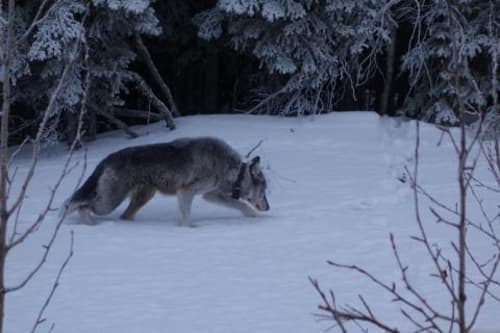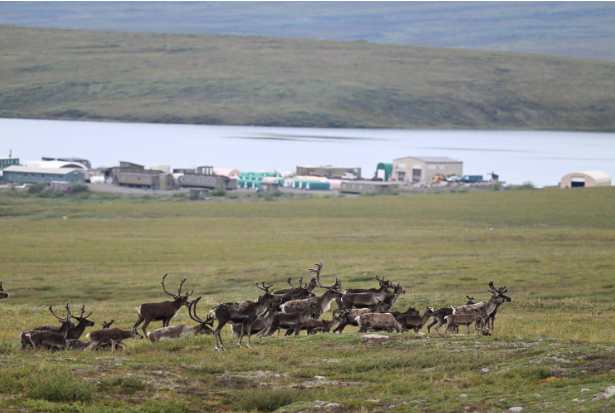At times I went a little coconuts living in tiny spaces with three other guys. Kicking someone’s coffee mug set in your pathway and inhaling another’s essence at times had me reciting my mother’s line, “God give me strength and patience.” But the journey out of my comfort zone was a lesson in appreciation. As they all seem to be.
I got my alone time covering a trans-Alaska distance on snowmachine. On our traverses between sampling nodes, sometimes more than 100 miles and five hours at a pull, I tied on my friend Robbin’s hat made of beaver fur. It kept me warm, deadened the sound of the engine, once saved my head when a sled tried to squish it and transported me to my own universe, one in which I could sing, daydream and follow the tracks ahead with no worries.
I now love being off the Skandic, and being away from its roar and the taste of its oily smoke. Shedding 20 pounds of clothing and clunky boots was bliss. But an unexpected wave of melancholy hit me when I saw the brute parked for the summer next to a shed.
The Arctic left me with this: The terror of seeing fresh polar bear tracks inside a creepy old Distant Early Warning station, a black wolf darting across snow-covered tundra, the nuthouse chatter of ptarmigan and, on the best days, fingers of cloud scratching blue sky.
Other days were a fun-house world of traveling in overcast, flat light. It is surprisingly stressful to operate a snowmachine when you can’t see the path laid down by the person 20 feet ahead. You don’t know whether you are climbing or dropping, whether to lean or sit tall or if that standing animal is a ground squirrel or grizzly. Guido calls those conditions “the perfect whiteness.”
The sun’s orange melt into the snowscape north of Teshekpuk Lake resulted each night in a fiery pool of light on the white line of horizon. Shortly after, on the opposite side of the sky, was Earth’s purple shadow.
The flat horizon when looking south over Teshekpuk Lake was too vast to comprehend. In a world of 7 billion people, none of them are there. The whole trip had a frontier feel. That is a big appeal for the scientists — this hard-to-reach place has barely been studied. It must be nice to feel like you are the first. Standing on those quiet, frozen lakes, you felt like you were.
To contrast those moments, we also spent a good amount of time near Alpine oilfield and in developed areas of the National Petroleum Reserve – Alaska. A younger version of me would have cursed those oil rigs, rollagons scooting like bugs across the black line of the horizon, all those lights and the mysterious mushroom cloud of brown smoke we saw every day. But we dumped a good deal of gasoline in our tanks, hissing propane warmed our tents and burned diesel chased the cold from the cabins. So it is.
I’ve gone on too long here, but a final thanks to Ben Jones for taking a risk and asking me along. A bad fit for either of us would have made for a long three weeks. But I genuinely like these guys and admire the work they did, especially when they were cooked. I appreciate them making me feel like a partner despite my being utterly dependent on their ability to fix snowmachines and yank mine out of deep snow. I liked, too, how they stopped their machines to look at wolverine tracks, shared crude teenage humor that is at the heart of every grown-up boy and, most of all, led me safely through the perfect whiteness.
Since the late 1970s, the University of Alaska Fairbanks’s Geophysical Institute has provided this column free in cooperation with the UAF research community. Ned Rozell is a science writer for the Geophysical Institute.
Pages: 1 2








